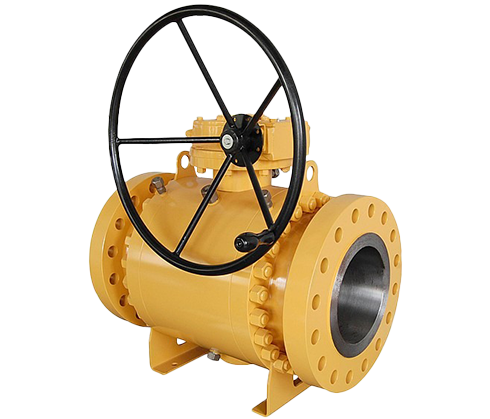2025-08-08
As infrastructure demands increase and energy networks grow more complex, the role of the Trunnion Mounted Valve continues to evolve. These valves are playing a crucial part in managing high-pressure flow and maintaining system integrity across expanding pipeline grids. Their mechanical design provides support to the valve ball at both ends, helping less wear during operation and enabling more reliable performance over extended cycles.

The structural advantages of a Trunnion Mounted Valve make it suitable for applications where standard floating ball valves may not provide sufficient control. As pipelines stretch across longer distances and operate under greater pressure, consistent sealing and reduced torque operation are key concerns for system engineers. The trunnion design addresses these concerns effectively by absorbing the stress that would otherwise fall on the valve seats. This makes the Trunnion Mounted Valve a preferred component in various pipeline segments handling oil, gas, and industrial fluids.
In parallel with surface pipeline systems, sub-surface infrastructure has also expanded. The Underground Ball Valve has become increasingly common in projects where surface space is limited or exposure to environmental conditions must be lessd. These valves provide remote flow control without needing above-ground access points, which helps reduce maintenance disruptions and supports urban planning initiatives.
Integration between the Trunnion Mounted Valve and Underground Ball Valve technologies is becoming more apparent. Some applications now call for trunnion-mounted configurations installed below grade, combining the strength of the trunnion support system with the low-profile benefits of underground placement. This dual approach allows engineers to address both operational stress and environmental constraints in one solution.
Material selection also plays a significant role in how these valves perform across varying conditions. Many Trunnion Mounted Valve assemblies are built using carbon steel or stainless steel bodies, designed to withstand corrosion and mechanical fatigue. Similarly, the Underground Ball Valve must endure soil pressure, moisture, and temperature shifts over time. This demands attention to coatings, sealing systems, and actuation compatibility to ensure long-term reliability.
Another trend driving these designs forward is the increased use of automation in pipeline systems. A Trunnion Mounted Valve can be fitted with actuators that support electronic monitoring and remote operation, allowing systems to respond faster to pressure changes or shut-off events. In underground networks, this capability is even more critical. Since the Underground Ball Valve often operates in inaccessible locations, integrating automation and telemetry reduces the need for manual intervention.
The evolution of safety standards and environmental regulations also continues to influence valve development. Modern pipelines must less leakage, reduce emissions, and support sustainable maintenance schedules. The Trunnion Mounted Valve, with its rigid mounting and reduced seat wear, contributes positively to these goals. When used in conjunction with an Underground Ball Valve, the system can offer sealed, compact solutions that align with new regulatory requirements without requiring frequent access.
From regional energy networks to city infrastructure, both the Trunnion Mounted Valve and Underground Ball Valve have become essential components. Their adaptability to new pressures—both literal and logistical—ensures they will remain central to future pipeline innovations. As engineers refine design priorities and adapt to expanding service needs, these valves continue to demonstrate their value across diverse installation scenarios.